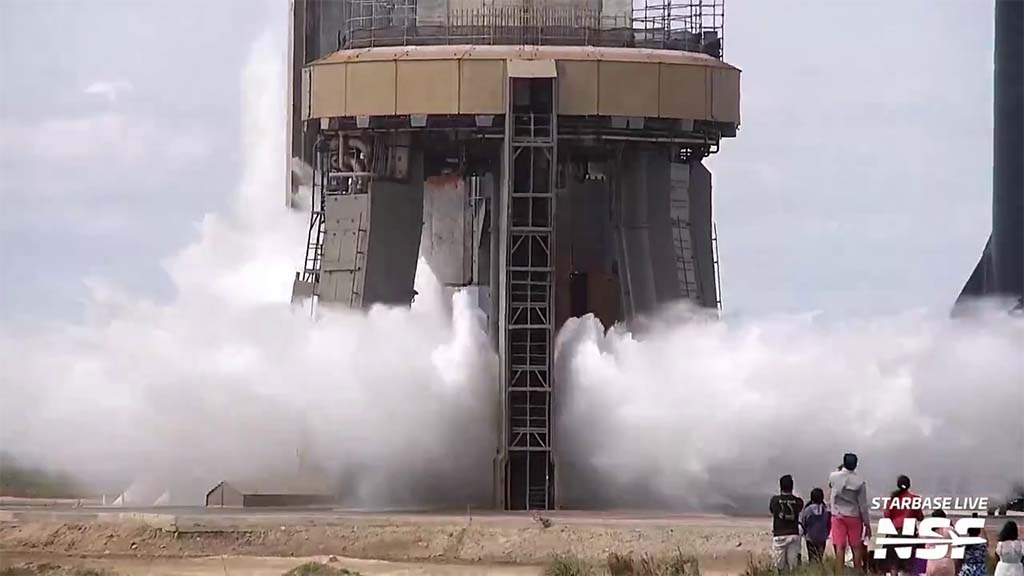SpaceX
SpaceX tests water deluge system for third Starship launch

SpaceX on Sunday tested the water deluge system for the third Starship test flight. The system is responsible for supporting the launch pad from liftoff thrust.
Nasaspaceflight shared visuals of the deluge system at Starbase as part of the preparations for the orbital flight.
As part of the continued preparations for the 3rd flight of Starship, SpaceX performed another test of the water deluge system at Starbase, to the delight of those watching.
Stay tuned to @NASASpaceflight‘s Starbase Live 24/7 to see what happens next https://t.co/wTIGOIV9NO pic.twitter.com/8kTuQ6U240— Elisar Priel (@ENNEPS) March 10, 2024
Deluge System:
SpaceX launched the first Starship test flight on April 20, 2023, and it broke out at the launch pad with debris scattered throughout the area. Federal Aviation Administration took an objection to this mishap and filed its assessment report on its impact on biological diversity.
Afterward, SpaceX made new changes in the launch pad foundation by installing thicker concert, additional piles, and steel plates over the foundation.
The steel plates include a water circulation system or deluge system that can be activated to protect the steel plates during an engine ignition for static fire or vehicle launches.
Around 358,000 gallons of non-contaminated water would be pushed from ground tanks into the steel plates and released through holes in the planting.
The deluge system applies a large amount of water to cool and create a barrier between the steel plate and the rocket exhaust. It aims to absorb sound energy and heat produced by the first stage’s 33-raptor engine.
The deluge system consists of the following components and is constructed within the vertical launch area.
- Water storage: A water source to provide the required volume, flow, and pressure for the deluge system.
- Press tank: It is a storage tank that is pressurized with nitrogen gas at 3,000 pounds per square inch (psi).
- Pumping System and piping network: It keeps on flowing water from storage tanks to the main pipeline for the deluge system.
- Control system and valves: It is used to activate/deactivate the deluge system and includes sensors, actuators, and a control unit to monitor water levels, pressures, and system status.
- Water containment: These contain water from the deluge system by containment structures. These containment structures include gutters, a retention basin below the launch pad, one or more retention ponds, and berms.
Extension of the water containment area includes retention areas within the VLA with a total capacity of 276,000 gallons.
How it works?
The deluge system activates immediately before (approx 5 seconds) engine ignition. It flows water from the storage tanks through a piping network to spray nozzles at the launch pad. Most of the pre-ignition water is captured by containment structures.
It is estimated that approximately 72,000 gallons of water are used for each static fire and approximately 132,000 gallons of water for each launch. The peak water flow rate would be between 100,000 gallons per minute and 260,000 gallons per minute.
